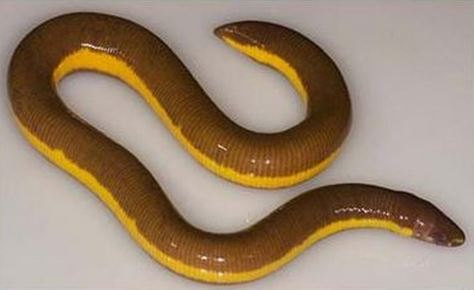Note4Students
From UPSC perspective, the following things are important :
Prelims level: Striped Caecilian, Herpetofauna

Why in the News?
- A limbless amphibian, the striped caecilian (Ichthyophis spp), has been newly identified within the 1,307.49 sq. km Kaziranga National Park and Tiger Reserve.
- Assam’s wildlife officials reported its discovery during a herpetofauna survey.
Back2Basics: Herpetofauna
|
About Striped Caecilian
- The Striped Caecilian (Ichthyophis spp.) is a type of limbless amphibian belonging to the family Ichthyophiidae.
- Caecilians are often mistaken for snakes or worms due to their elongated, cylindrical bodies and lack of limbs.
- They are primarily found in tropical regions of Africa, Asia, and the Americas.
- They usually live underground or in moist soil habitats.
Key features of the Striped Caecilian include:
- They have smooth, cylindrical bodies with a ringed or striped pattern, hence the name “striped.”
- Caecilians are predominantly fossorial (burrowing), spending most of their lives underground or in leaf litter. This behaviour makes them elusive and difficult to study.
- They are carnivorous, feeding on small invertebrates found in soil and leaf litter.
- Their eyesight is generally poor, and they rely on chemoreception (sensing chemicals in the environment) to locate prey.
- Caecilians are known for their unique reproductive strategies, which can involve live births or laying eggs. Some species exhibit parental care, with adults guarding eggs or young offspring.
Significance: Kaziranga’s Biodiversity
- Kaziranga National Park’s diverse ecosystem, encompassing flood plains, wetlands, grasslands, and hill tracts, provides an ideal habitat for herpetofauna.
- The park hosts 24 amphibian species, 74 reptile species, and 21 of India’s 29 species of tortoises and freshwater turtles.

About Kaziranga National Park
|
PYQ:[2024] The organisms “Cicada, Froghopper and Pond skater are: (a) Birds (b) Fish (c) Insects (d) Reptiles |
Get an IAS/IPS ranker as your 1: 1 personal mentor for UPSC 2024

